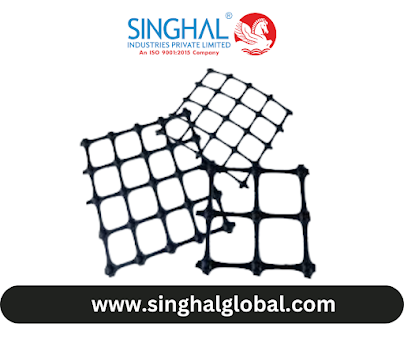Building A Strong Geogrid Retaining Wall With Cost Efficiency
Geogrid retaining walls are a cost-effective and efficient way of creating a structure that stands the test of time. With this guide, understand the step-by-step process of constructing a geogrid wall from start to finish.
What is a Geogrid Retaining Wall?
A geogrid retaining wall is an engineered solution used to build an earth retention structure or any other structure requiring strength and stability. Geogrids are commonly constructed from high-strength polymer material and feature a variety of different weave designs, allowing for increased flexibility in building structures that stand the test of time.
Design the Geogrid Structure.
To design an efficient geogrid retaining wall, engineers must consider the different loads that will be applied to the wall. Factors such as the soil condition, terrain grade, and underlying bedrock should all be taken into account in order to build a cost-effective and reliable geogrid wall. Properly analyzing these factors prior to building is essential for ensuring the wall stands up under pressure and can withstand any unexpected forces or impacts.
Plan for Foundation Support.
When building a geogrid retaining wall, it's important to include adequate foundation support. Planning for the right kind of foundation and correctly assessing the soil type and terrain grade are key steps in ensuring that an efficient and sturdy wall is constructed. A reinforced gravel or concrete base can be used to form a strong foundation along with geo fabric layers and geogrids to reinforce the wall further. Additionally, it’s important to make sure the base is deep enough so that any movement or pressure from above won't cause damage to the wall structure.
Prepare the Base for Construction.
After assessing the feasibility and location of your geogrid retaining wall, it's time to begin preparing your base. The grade of the surface should be level and any existing vegetation or soil that could potentially interfere with construction should be removed. Once the area is cleared, you can use a geo fabric layer beneath the base material to help solidify it. This will ensure that it can hold the right amount of weight needed for the project. Additionally, a sloping gabion basket layer along the base can provide additional reinforcements by helping evenly disperse stress between different areas of the structure.
Gravel Backfill and Place Geogrid Panels.
After leveling the base material, you can begin the gravel backfill process. Begin by placing a geotextile fabric layer over the gravel then pour in the gravel to fill around the geogrid panels. It's important to keep ensure that there is enough gravel between each panel and around the corners of sections to make it stable. Additionally, remember to properly compact the backfill while making sure it is level before adding more layers of backfill. Lastly, continue filling in your retaining wall with additional layers of gravel backfill and keep an eye out for any subsidence or lateral displacement that might occur during construction.

.png)
Comments
Post a Comment